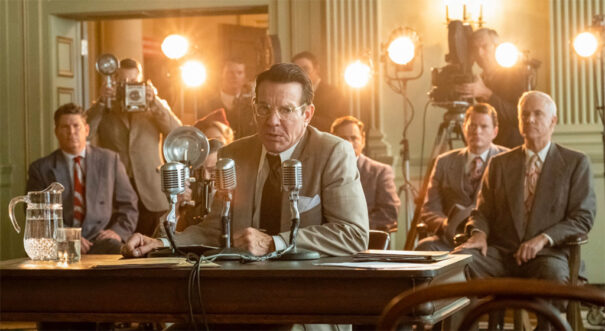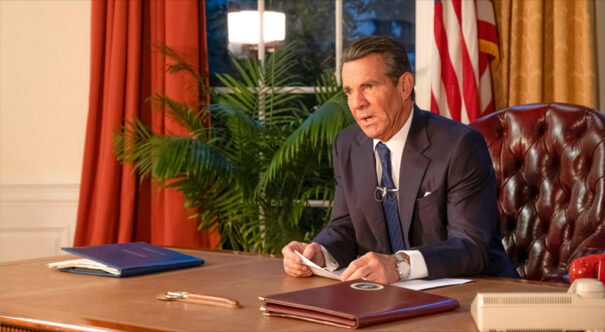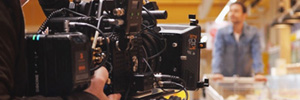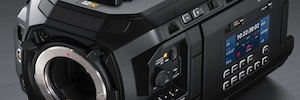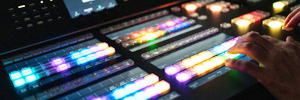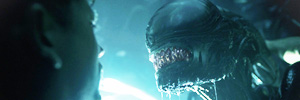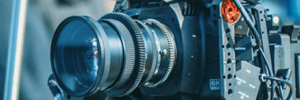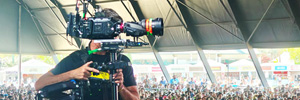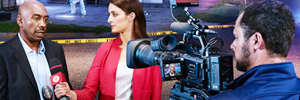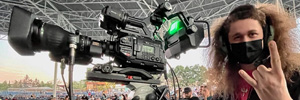ショーン・マクナマラの伝記映画「レーガン」、Blackmagic Designと撮影・ポストプロダクション
Blackmagic Design cameras and DaVinci Resolve Studio software have shaped ‘Reagan’, a feature film shot by Sean McNamara and photographed by Christian Sebaldt.
Reagan tells the story of Ronald Reagan, 40th President of the United States. McNamara transcends the story of an actor’s rise from under the Hollywood spotlight to lead America with an ambitious approach that has resulted in over 4000 scenes and a narrative spanning 80 years. For Christian Sebaldt, ASC, the feature film was a “very ambitious and challenging” project that led him to try out different lenses and styles. In fact, in collaboration with colourist Paul Westerbeck of Picture Shop, he developed seven aesthetics (CDLs) with two different lenses and different ISO values.
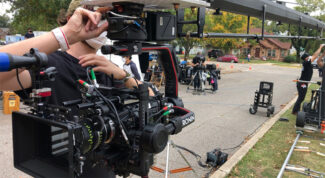 Sebaldt used a variety of camera and lens combinations. These included Blackmagic Design’s URSA Mini Pro 12K そして Pocket Cinema Camera 6K Pro models: “The 12K worked a lot, particularly as an ‘instant crane’ camera. Since the movie took us to so many places, we could not afford to have a ‘Techno’ type crane available at all times. So our Key Grip Brandon Jones supplied a jib arm which we could put on tracks at any time, and our B Camera Operator Andrew P.C. Smith had a Ronin 2 gimbal. We mounted the URSA 12K on the Ronin and it lived there. When a crane would beef up the production value of a scene we would hang the 12K on the crane and we were ready to go.”
Sebaldt used a variety of camera and lens combinations. These included Blackmagic Design’s URSA Mini Pro 12K そして Pocket Cinema Camera 6K Pro models: “The 12K worked a lot, particularly as an ‘instant crane’ camera. Since the movie took us to so many places, we could not afford to have a ‘Techno’ type crane available at all times. So our Key Grip Brandon Jones supplied a jib arm which we could put on tracks at any time, and our B Camera Operator Andrew P.C. Smith had a Ronin 2 gimbal. We mounted the URSA 12K on the Ronin and it lived there. When a crane would beef up the production value of a scene we would hang the 12K on the crane and we were ready to go.”
In parallel, Sebaldt relied on the Pocket Cinema Camera 6K Pro model for its compact size and great image quality: “With the appropriate lens I could add a cool angle in just minutes at any time with those small and lightweight cameras. Often they were mounted on the ceiling, like in the Oval Office, looking straight down with an ultra wide prime. We also found we could capture additional angles of extended dialog scenes where we needed solid coverage for editorial.” To get the most out of the captured images, the cinematographer opted for the Blackmagic RAW format: “Blackmagic RAW is a codec of amazing quality. I always shoot constant quality Q0, and know that later, because we have so much latitude, we can easily manipulate the images in the color suite. Blackmagic Design color science has such natural skin tones and fantastic reproduction of challenging contrast and detail in any scene.”
Collaborative post-production with DaVinci Resolve Studio
The final colour grading stage was carried out by Westerbeck, who enjoyed the challenge of colour grading this film in DaVinciリゾルブスタジオ: “Reagan covers an extensive historical timeline, which presented the unique challenge of matching footage shot on all cameras as well as with hundreds of archival clips from Reagan’s era. Achieving a cohesive look across such diverse sources was crucial for the film’s visual narrative.”
The use of specific tools in DaVinci Resolve facilitated the matching process between the original and archival footage. Says the colourist: “I found the new Film Look Creator in DaVinci Resolve Studio 19 to be invaluable for matching the various periods to the contemporary material. The new AI noise reduction was not only fast but also highly effective, and the face refinement tool significantly enhanced the final look.”
The post-production team, including the editor, was able to add new shots and make changes during this process. Specifically, conform editor David Schneider, Westerbeck and assistant colorist Larry Yunger turned to the collaboration tools in DaVinci Resolve Studio to streamline their workflow: “I had my first experience with collaboration mode while working on the movie ‘REAGAN,’ and it has significantly improved our workflow. While I was focused on color grading, David was able to add new shots, make changes to the cut and add subtitles and credits in the background. My color assistant worked on a third system, staying ahead of me by updating color on new shots based on the previous shots in the timeline.”
“In the past, the editor worked on updates on an isolated system, and when he or she finished, we had to pause our work while the assistant integrated new shots into the project. We also had to manage media across two separate storage systems for editing and color grading. Collaboration mode in DaVinci Resolve has effectively eliminated these disruptions and simplified media management, allowing us to work more efficiently,” concludes Westerbeck.
¿Te gustó este artículo?
Suscríbete a nuestro RSSフィード Y no te perderás nada.



